Dune sunflower, Helianthus debilis, is a commonly recommended plant for Florida native gardeners. It’s in the daisy family (Asteraceae), and it’s very pretty:
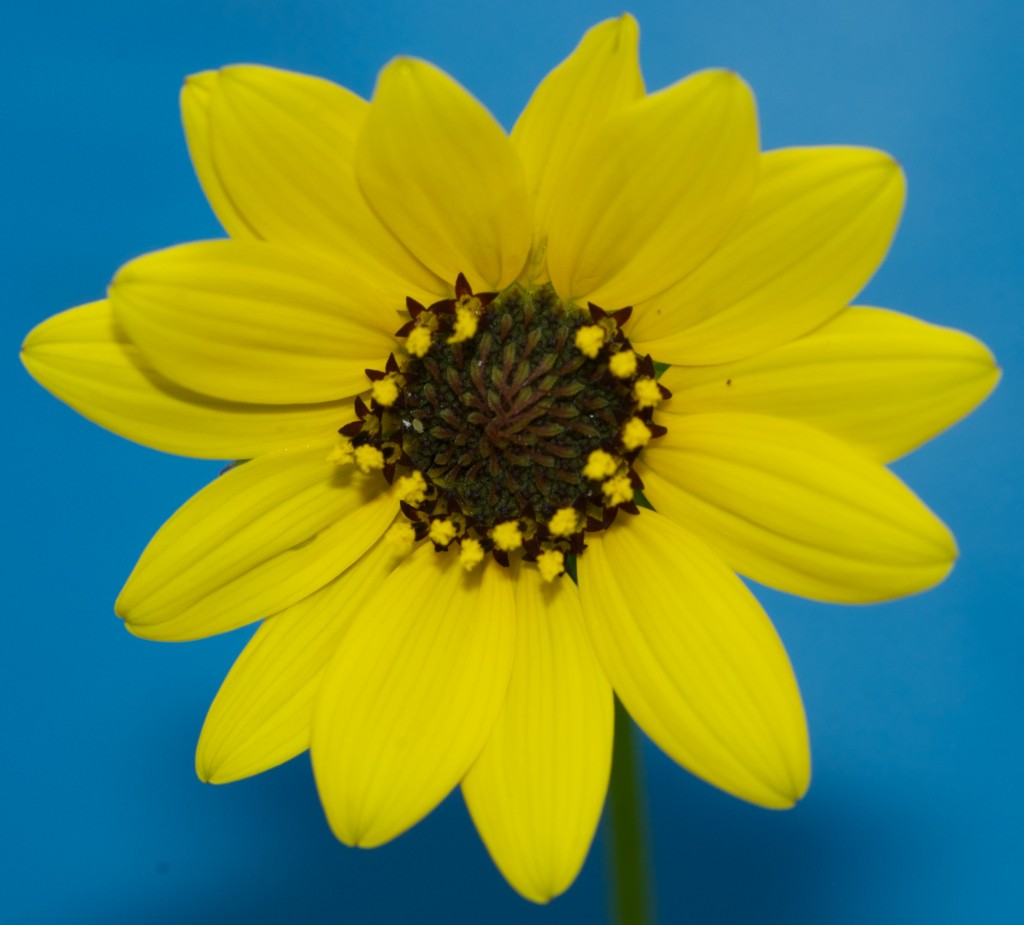
Yellow rays, purple disc flowers, loads of pollen—very attractive to bees and butterflies.
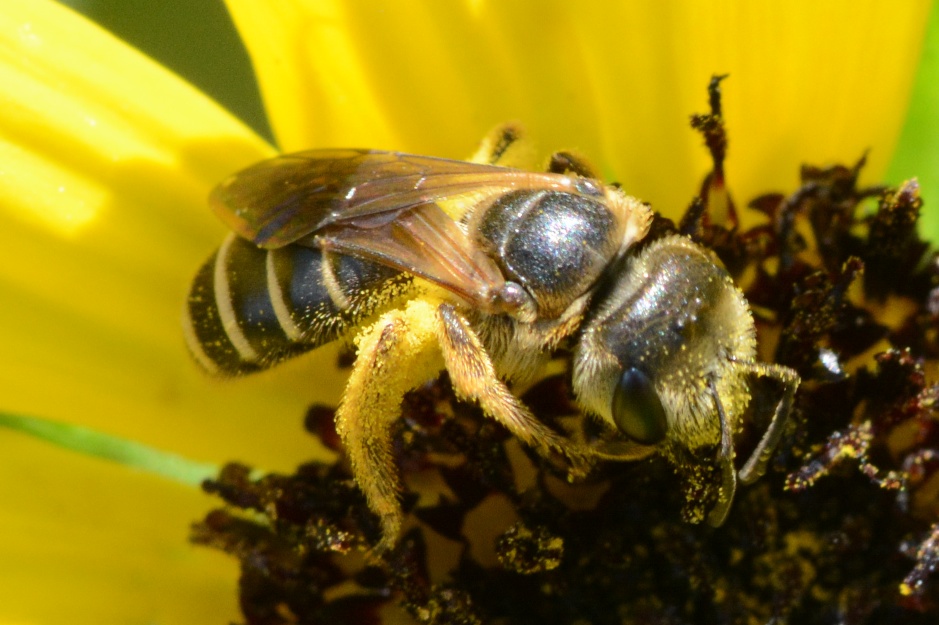
It self-sows and reseeds annually, so once you’ve got it established, you don’t have to do much except remove it from places you don’t want it! It grows best in “dune” environments: sandy areas in full sun, hence the common name.
Since it grows to cover such a large area (it’s often used as a groundcover), it naturally develops a bit of an ecosystem of its own. I’ll frequently find flower spiders gleaning insects attracted by the bright colors and abundant pollen. Until the other day, though, I hadn’t thought of it as a larval host plant for lepidoptera young, but now I’ve seen a couple of things that have started me thinking.
For example, here’s a flower crab spider (family Thomisidae, species incertae, most likely Mecaphesa celer, formerly known as Misumenops celer) enjoying a fly of some kind (order Diptera, perhaps family Sarcophagidae, but without a view of the head, it’s hard for a nonspecialist like me even to get to the family level on this one!):
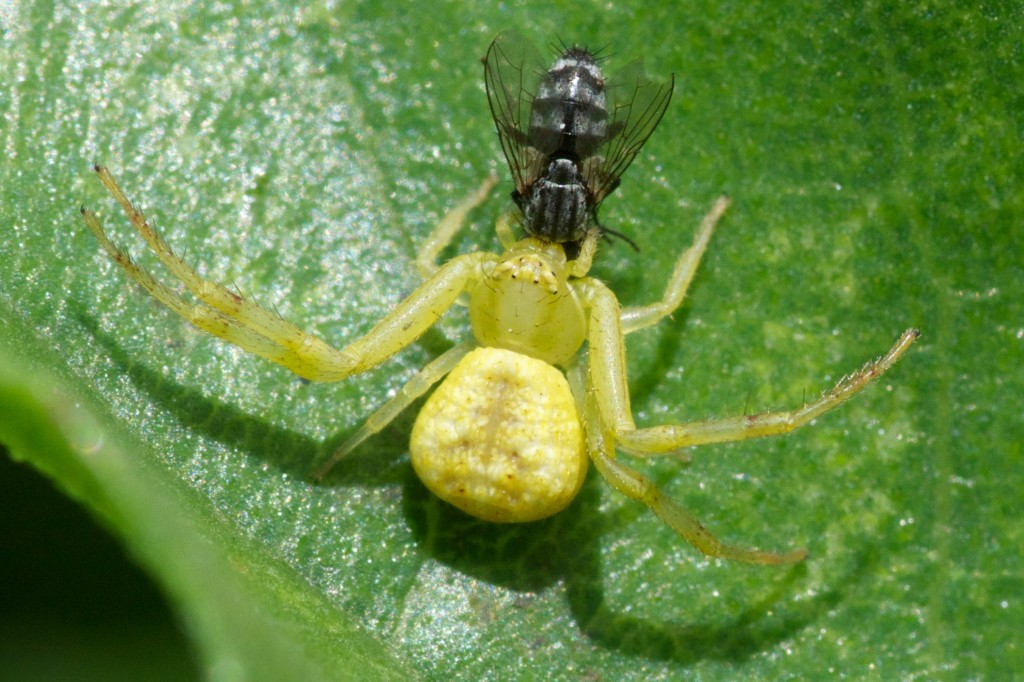
But here’s another flower crab spider with what looks like a tiny caterpillar in its mouth:
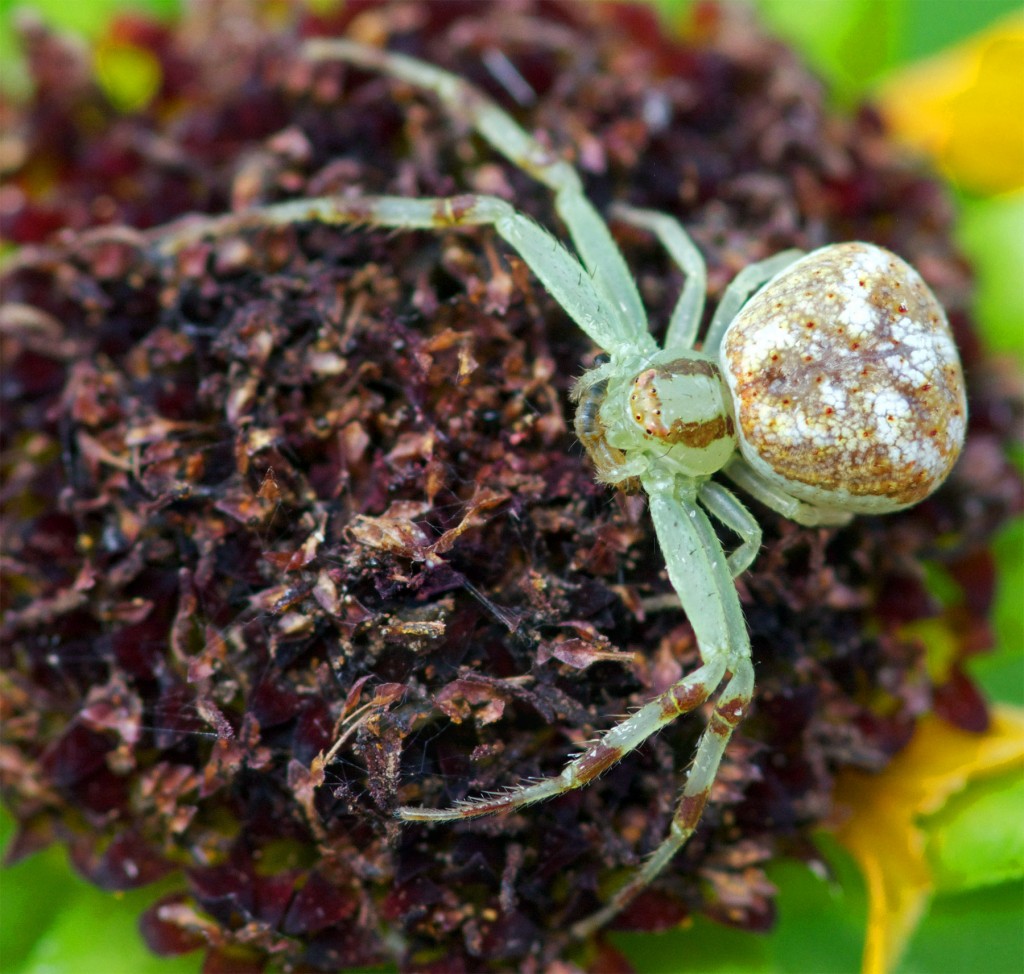
If you’re not convinced that there’s a caterpillar there, here’s a close-up:
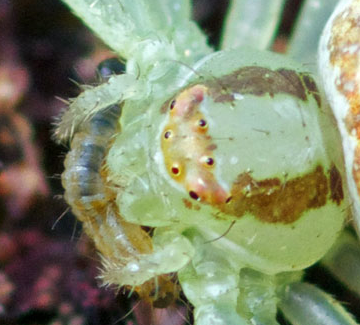
Once I noticed that caterpillar, I started looking for more, and sure enough, these Dune Sunflowers appear to be some sort of host plant (maybe just a roosting location during the day?) for what look like grass-skipper or moth caterpillars. Here’s one without a spider munching on it; it appears to be munching on the flower instead:
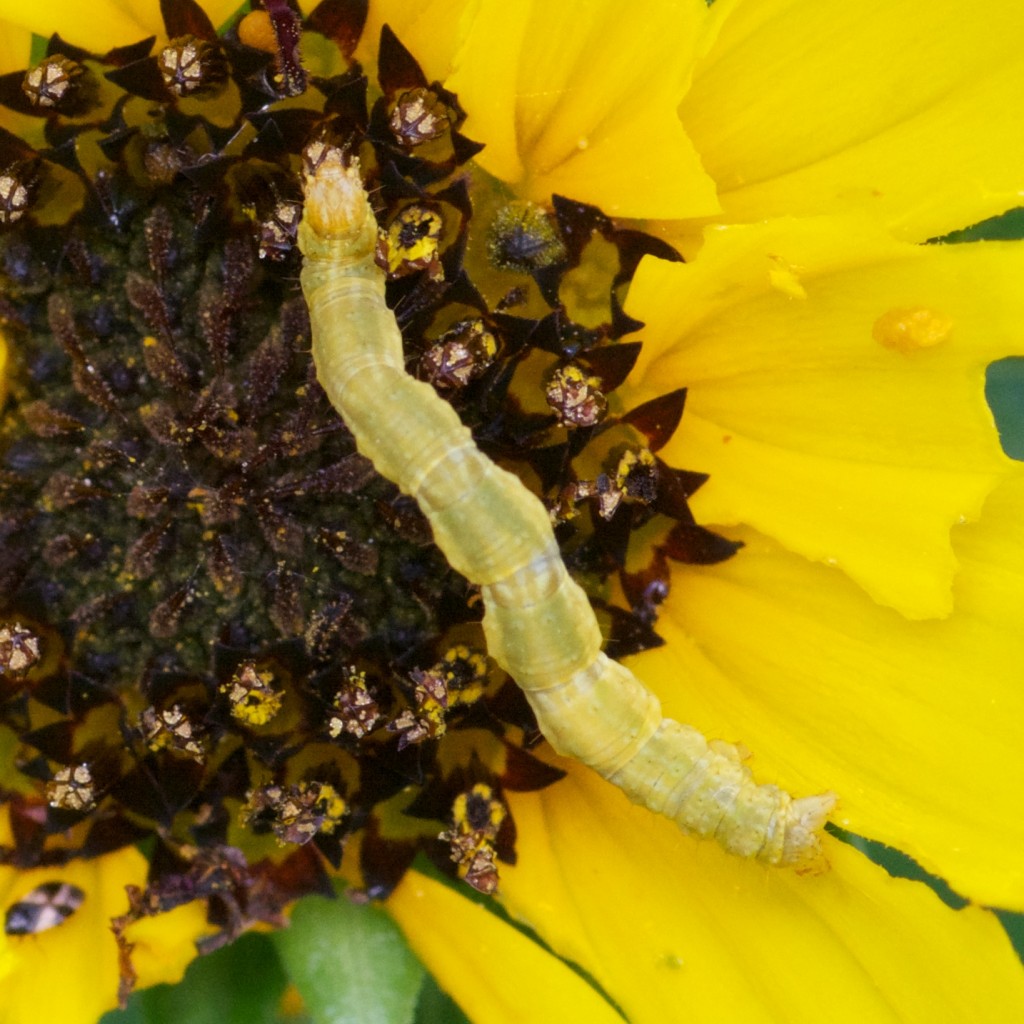
I haven’t been able to find much on Helianthis debilis as a host plant for lepidopterans; according to the interwebs, its only attraction is as an adult nectar source.
My Wagner, though, lists sunflower as the host plant for the common looper moth caterpillar, which this caterpillar resembles fairly closely (although it looks much MORE like the related soybean looper, which does not feed on sunflower, at least according to Wagner, and MOST like the found-in-Florida Cabbage Looper, Trichoplusia ni, which isn’t specifically associated with sunflowers).
So I’m going to tentatively ID it as Cabbage Looper, and if someone wants to tell me I’m wrong, I’m happy to listen. I don’t think the caterpillar will mind, either way.
References
Wagner, D. (2005). Caterpillars of Eastern North America. Princeton UP.

Thank you for your article.
Yes! I was looking to identify the catterpillar I found on my dune sunflower and it is indeed cabbage looper.